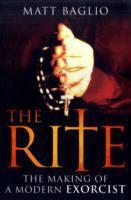Ancient Papyrus Fragment Reveals Earliest Copy of Infancy Gospel of Thomas
Mythology/Folklore/History
Thursday 13th, June 2024
3 minute read.
A fragment of papyrus that had been overlooked for decades has been identified as the earliest known copy of the Infancy Gospel of Thomas, offering a rare glimpse into apocryphal stories about the early life of Jesus Christ. The fragment, catalogued as "P.Hamb.Graec. 1011", was found in the Hamburg Carl von Ossietzky State and University Library and dates back to the 4th or 5th century CE.
The discovery was made by Dr Lajos Berkes from the Institute for Christianity and Antiquity at Humboldt-Universität zu Berlin and Prof Gabriel Nocchi Macedo from the University of Liège, Belgium. Previously, the earliest known examples of this text were from the 11th century CE. The new fragment, however, significantly predates these, providing crucial insights into the transmission of the text over the centuries.
"The fragment is of extraordinary interest for research", stated Dr Berkes. "On the one hand, because we were able to date it to the 4th to 5th century, making it the earliest known copy. On the other hand, because we were able to gain new insights into the transmission of the text".
"Our findings on this late antique Greek copy of the work confirm the current assessment that the Infancy Gospel according to Thomas was originally written in Greek", added Dr Nocchi Macedo.
The papyrus measures approximately 11 centimetres by 5 centimetres and contains 13 lines of Greek text, with about 10 letters per line. It lay unnoticed because it was initially thought to be part of an everyday document, such as a private letter or a shopping list, due to its clumsy handwriting.
"It was thought to be part of an everyday document because the handwriting seems so clumsy", explained Berkes. "We first noticed the word Jesus in the text. Then, by comparing it with numerous other digitised papyri, we deciphered it letter by letter and quickly realised that it could not be an everyday document".
By analysing and comparing words like "crowing" and "branch" found in the text, researchers matched the fragment to the Infancy Gospel of Thomas. This particular story, known as the "vivification of the sparrows", describes a young Jesus creating sparrows out of clay and bringing them to life when rebuked by his father, Joseph, for doing such on the Sabbath.
"From the comparison with already known manuscripts of this Gospel, we know that our text is the earliest. It follows the original text, which according to current state of research was written in the 2nd century AD", Berkes noted.
The story itself depicts the "second miracle" of Christ, where the child Jesus was playing at a river fort, made sparrows out of clay, and brought them to life with a clap of his hands after being reprimanded by his father for working on the Sabbath.
The fragment provides new perspectives on the apocryphal narratives that sought to depict the early life of Jesus as a miraculous figure. It also sheds light on how these stories were transmitted and adapted over time. This discovery enhances our understanding of early Christian thought and the diversity of beliefs regarding Jesus's life and miracles.
The discovery was made by Dr Lajos Berkes from the Institute for Christianity and Antiquity at Humboldt-Universität zu Berlin and Prof Gabriel Nocchi Macedo from the University of Liège, Belgium. Previously, the earliest known examples of this text were from the 11th century CE. The new fragment, however, significantly predates these, providing crucial insights into the transmission of the text over the centuries.
"The fragment is of extraordinary interest for research", stated Dr Berkes. "On the one hand, because we were able to date it to the 4th to 5th century, making it the earliest known copy. On the other hand, because we were able to gain new insights into the transmission of the text".
"Our findings on this late antique Greek copy of the work confirm the current assessment that the Infancy Gospel according to Thomas was originally written in Greek", added Dr Nocchi Macedo.
The papyrus measures approximately 11 centimetres by 5 centimetres and contains 13 lines of Greek text, with about 10 letters per line. It lay unnoticed because it was initially thought to be part of an everyday document, such as a private letter or a shopping list, due to its clumsy handwriting.
"It was thought to be part of an everyday document because the handwriting seems so clumsy", explained Berkes. "We first noticed the word Jesus in the text. Then, by comparing it with numerous other digitised papyri, we deciphered it letter by letter and quickly realised that it could not be an everyday document".
By analysing and comparing words like "crowing" and "branch" found in the text, researchers matched the fragment to the Infancy Gospel of Thomas. This particular story, known as the "vivification of the sparrows", describes a young Jesus creating sparrows out of clay and bringing them to life when rebuked by his father, Joseph, for doing such on the Sabbath.
"From the comparison with already known manuscripts of this Gospel, we know that our text is the earliest. It follows the original text, which according to current state of research was written in the 2nd century AD", Berkes noted.
The story itself depicts the "second miracle" of Christ, where the child Jesus was playing at a river fort, made sparrows out of clay, and brought them to life with a clap of his hands after being reprimanded by his father for working on the Sabbath.
The fragment provides new perspectives on the apocryphal narratives that sought to depict the early life of Jesus as a miraculous figure. It also sheds light on how these stories were transmitted and adapted over time. This discovery enhances our understanding of early Christian thought and the diversity of beliefs regarding Jesus's life and miracles.



